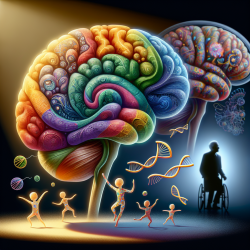Introduction
In the quest to improve classroom behavior and academic productivity among students with attention difficulties, many educators and therapists have turned to sensory-based interventions (SBIs) like fidget toys. Among these, the Fidget Cube has gained popularity due to its promise of enhancing focus and reducing stress. However, a recent study titled The Effect of the Fidget Cube on Classroom Behavior among Students with Perceived Attention Difficulties suggests that these claims may not hold up under scrutiny.
Study Overview
The study employed an ABAB withdrawal design to assess the impact of noncontingent access to a Fidget Cube on academically engaged behavior, off-task behavior, and academic productivity among three third-graders with perceived attention difficulties. Despite the initial excitement surrounding fidget toys, the study found no significant improvements in the students' academic engagement or productivity.
Key Findings
- Participants did not show improvements in academically engaged behavior with the introduction of the Fidget Cube.
- Math problems attempted and completed accurately did not increase during the intervention phases.
- Engagement with the Fidget Cube decreased over time, suggesting a novelty effect rather than sustained interest or benefit.
Implications for Practitioners
These findings suggest that educators and therapists should be cautious in adopting fidget toys as a strategy for improving classroom behavior and academic outcomes. While the Fidget Cube may help in reducing off-task behavior by keeping students quiet and still, it does not necessarily translate into increased academic productivity or engagement.
Alternative Strategies
Given the lack of empirical support for fidget toys, practitioners are encouraged to explore alternative, evidence-based strategies for managing attention difficulties in the classroom. These may include behavioral interventions, environmental modifications, or targeted skill-building activities.
Encouragement for Further Research
The study highlights the need for further research into the effectiveness of SBIs and other interventions for students with attention difficulties. Future studies should consider the impact of task difficulty, the potential role of instructions, and the need for individualized approaches.
Conclusion
While fidget toys like the Fidget Cube are popular and easy to implement, their effectiveness in educational settings remains questionable. Practitioners should prioritize interventions backed by robust evidence to ensure the best outcomes for students.










